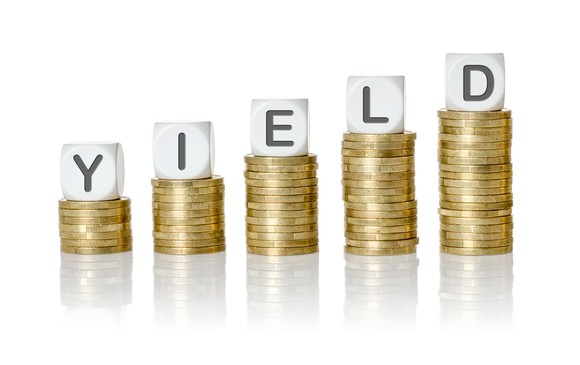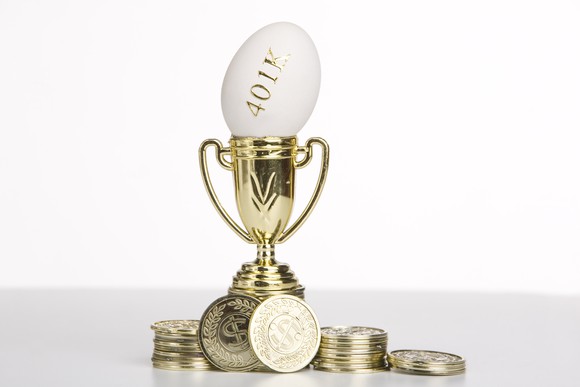With the number of COVID-19 cases trending upward, worries are returning that we'll still be wrestling with the coronavirus pandemic for quite some time to come. Unfortunately, that translates to not only continued health worries, but also to extended concerns about how secure our economic futures are as well.
With first-time unemployment claims still topping 1 million per week and the unemployment rate above 13%, there's a real risk of needing to tap your savings to cover your costs because of unemployment. If you need to turn your savings into cash because of the coronavirus pandemic, we'll look at 13 ways to do that. They're generally in order of least to most ugly, though deeper in the list, you can make a case for considering a different order if your circumstances warrant.
Note that if you're already of a traditional retirement age -- which can be as early as the year you reach 55 for some employer-sponsored plans -- the rules change. In those cases, it could potentially make more sense to start tapping your retirement accounts for money you may need in the short term, even if you plan to return to work once you're able to.

Image source: Getty Images.
No. 1: Start with your emergency fund
Typical financial planning guidance suggests that you should sock away three to six months of your costs as cash in an emergency fund, just in case something like this happens. If you've followed that guidance, you've got the money to get yourself through a short-term crisis like temporary unemployment. If you find yourself in that situation, go ahead and tap your emergency fund first. This is precisely why you built that fund in the first place.
No. 2: Reach into savings you have dedicated for other future purchases
If you're saving up cash for a down payment for a house, your next car, your next vacation, or some other purchase you're planning to make in the future, that cash is also fair game if you need it. Tapping this money does delay your ability to make that purchase, but you've got bigger worries on your hands at the moment. To the extent those other purchases can be delayed -- and often they can -- that money can help you meet your more urgent needs today.
No. 3: Sell stuff you no longer need
If you look around your home, you're likely to find a collection of things you no longer use or need. If you need to raise cash, remember the old saying that "one person's trash is another person's treasure." You can sell that stuff online, in a yard sale, or potentially a consignment shop. In so doing, you can raise some much needed cash and rid your life of clutter in a single action.
No. 4: Tap your interest and dividend payments

Image source: Getty Images.
Do you have stocks, bonds, CDs, or savings accounts that pay interest or dividends? Are those payments set up to automatically be reinvested? If you turn off reinvestment and have those payments pile up as cash, that cash is available to you to spend if you need it. Yes, taking those payments as cash will result in you losing the compounding you would otherwise get on the money, but if the alternative is losing your home, tapping that cash is a much better option.
No. 5: Use the cash from your maturing or called investments
CDs, most bonds, and some preferred stocks have maturity dates, by which the issuers convert the investments into cash. In addition, bonds and preferred stocks often are callable, which means the issuer can covert the investments into cash before that maturity date if circumstances warrant. In ordinary circumstances, it might be tempting to reinvest the money from those maturing or called investments. When money is tight, that cash can instead be spent to cover more immediate needs.
No. 6: Sell fixed-income, low-return assets
If your asset allocation plan calls for you to own bonds or other fixed-income investments, those assets probably have held up fairly well, as interest rates have dropped since the beginning of the year. That means two things. First, you're probably not giving up much in future returns if you sell those assets now instead of waiting for maturity. Second, you may actually have a gain on your sale because of the way bonds react to interest rate changes. That makes them decent candidates to consider selling if you need to raise cash.
No. 7: Sell your overvalued stocks or ones that no longer meet your thesis
Ultimately, the goal of stock investing is to deliver positive returns over time. If the companies you own no longer look capable of doing so -- either because their stocks have become seriously overvalued or because your investing thesis broke down -- it's time to consider selling. That holds true no matter what the economic circumstances, but it you need the cash you raise from selling them, then give yourself permission to spend rather than reinvest that money.
No. 8: Consider tapping your home equity line of credit

If you have a home equity line of credit set up, it can serve as a source of cash in a crunch. Just recognize that in doing so, you're borrowing money that needs to be paid back, or else you risk losing your house. As a result, if you do this, understand that this is a temporary measure in an emergency and that if the crisis lasts long enough, you'll have to progress further down this list in order to keep you home.
The key to leveraging a Home Equity Line of Credit is that they're a lot easier to qualify for before you need the money than after you find yourself in a cash crunch. So if you think you might need to tap your home equity, make sure you have the line of credit set up before you're informed that your job will be eliminated.
No. 9: Liquidate other after-tax investments
Up until this point, all the ways of raising cash have been fairly low-risk, fairly low-cost approaches to scrounge up money. Unfortunately, those sources of cash are also fairly limited for most of us. Once they're exhausted, however, if you still need the money, you start to face tougher trade-offs. One of the trade-offs you'll face is choosing between liquidating your retirement accounts or your other after-tax investments.
It's not an easy choice, but if you're under a traditional retirement age, liquidating your other after tax investments before touching your retirement accounts may very well be the less ugly alternative. There are several key reasons for this, but some of the key ones are as follows:
- Retirement accounts can only accept so much money every year. Once that limit is reached, you can't add more. That makes it much more problematic to refill them if you've had to tap the cash to cover your costs for some other reason.
- Retirement accounts are generally better protected against creditors than non-retirement accounts. If you're forced into bankruptcy because of this mess, keeping your retirement money inside your retirement accounts may help you better hold on to that cash.
- Even though the 10% penalty for tapping your retirement accounts early is waived for this year if you were affected by COVID-19, the other taxes associated with early withdrawals still exist. That includes the fact that Roth IRA earnings tapped early are taxed as ordinary income.
- From a tax perspective, selling investments in an ordinary investment account is often a lower-cost method than taking an early withdrawal from your retirement account. This means that more of the money you tap from your ordinary investment accounts can remain yours.
No. 10: Withdraw your Roth IRA contributions
If you must reach into your retirement accounts early, the lowest cost way of reaching into those accounts comes from withdrawing your Roth IRA contributions. Money that you've directly contributed to your Roth IRA and money you've rolled into your Roth IRA and that has "seasoned" there for at least five years can be withdrawn without taxes or penalties.
If you can document the timing and amount of your Roth IRA direct and rollover contributions, you can take advantage of that rule to get your money back completely tax free. You'll lose the benefit of tax-free compounding on that money for your long-term future, but you will at least get access to every dollar you withdraw this way.
No. 11: Withdraw money from your Traditional 401(k) or Traditional IRA

Image source: Getty Images.
Money you withdraw from your Traditional 401(k) (or similar traditional employer-sponsored plan) or your Traditional IRA will generally be taxed as ordinary income. Ordinarily, you'd also face a 10% penalty for early withdrawals if you're under age 59 1/2 (55 for your employer-sponsored plan in the year you separate from service). If you've been affected by COVID-19, the 10% penalty is waived for early withdrawals of up to $100,000 from qualified retirement accounts.
Even without the penalty, this can be a pretty heavy tax burden to face, which makes it a fairly tough pill to swallow. Still, with the penalty waived, the tax treatment on these types of withdrawals is largely the same as it would be if you made the withdrawals in retirement. That makes it potentially a bit less ugly overall than the next item in the list. Still, if you want to flip No. 11 and No. 12, lowering your immediate costs of withdrawing your money is an understandable target to reach for as well.
No. 12: Withdraw money from your Roth 401(k)
If you're still in need of cash, the next place to consider tapping is your Roth-style 401(k) or similar employer sponsored retirement plan. Unlike a Roth IRA, the money you withdraw early from your Roth 401(k) is prorated between contributions and earnings. That means that the immediate tax treatment can be a bit better than early withdrawals from your Traditional 401(k), since you won't pay taxes on the portion of your withdrawals considered a return of contributions.
Still, even though the immediate tax consequences could be less ugly than withdrawing from your Traditional plan, the big benefit of a Roth-style plan is tax-free withdrawals in retirement. That makes every dollar you can keep in your Roth 401(k) worth more than a dollar you can keep in your Traditional retirement account. As a result, it's worth considering tapping your Traditional plan before your Roth plan, even if it does mean you'll face somewhat higher taxes at first.
No. 13: Withdraw the earnings from your Roth IRA
Finally, if you have no other sources of cash available, you can consider taking early withdrawals of the earnings from your Roth IRA. Even though the 10% early withdrawal penalty is waived for COVID-qualifying early withdrawals up to $100,000 in 2020, you'll still pay income taxes on the earnings you withdraw from your Roth IRA.
Converting potentially tax-free income in retirement to completely taxable income today is a very tough pill to swallow. It hurts in two ways. First, it is likely to be a tie for the most expensive move on this list from a current tax perspective, since you'll be paying full ordinary income taxes on every dollar you withdraw. Second, it's also the biggest hit from the perspective of the difference between what you pay today and what you'd pay if you're able to wait.
Why not a 401(k) loan?
Notably absent from this list is taking virtually out any sort of loan, with the exception of a home equity line of credit. In particular, 401(k) loans are very dangerous tools that can easily come back to bite you. If you don't pay back your loan on time and in full, it can be treated as a distribution. If the loan gets treated as a distribution after the 10% penalty is restored, then you'll pay that penalty on top of any ordinary taxes you owe on the distributed money.
One provision that makes 401(k) loans dangerous in this circumstance is that many plans require you to pay back any loans in full within 90 days of you separating from service from the company. If the reason you're taking out the loan in the first place is that you're not getting sufficient income, then what happens if your temporary furlough turns into complete unemployment? That starts the 90-day clock toward turning your loan into a distribution, with all the costs and taxes that entails.
Here's to a quick ending to the COVID pandemic
Ultimately, we need an effective treatment or vaccine, for the virus to become less lethal, or for herd immunity to reach the point where transmission rates slow on their own. When we reach that point, the economic reopening can resume in earnest, and we can all get back to work instead of worrying how we can cover our costs from whatever we have saved up.
Hopefully, that day comes soon. Until it does, however, we all need to be prepared for the possibility that we'll have to deal with the personal, health, and economic fallout from the pandemic. With these 13 ways to tap your money if you need to, you can help yourself set up a reasonably decent plan if you need to use it.